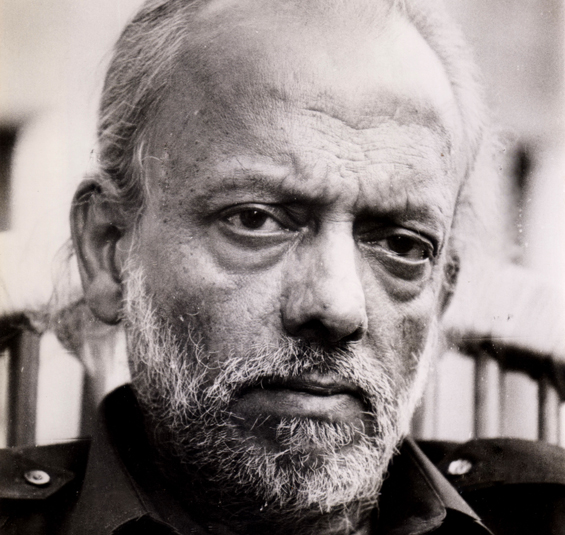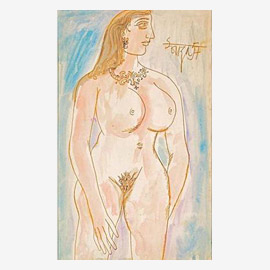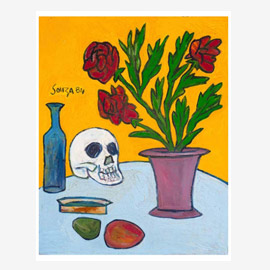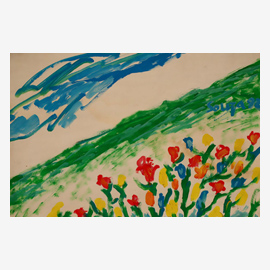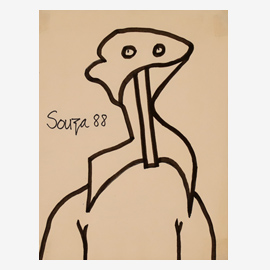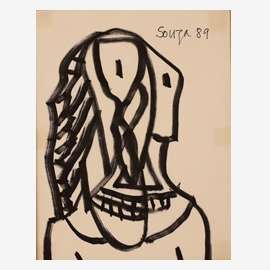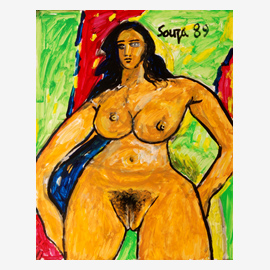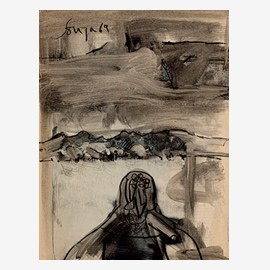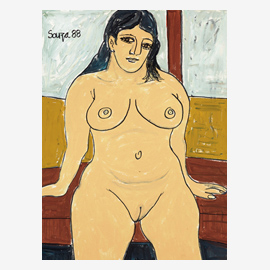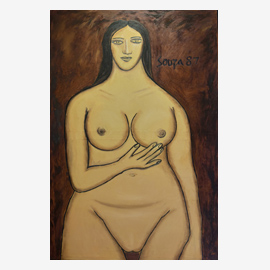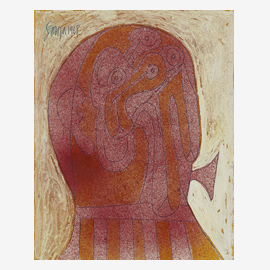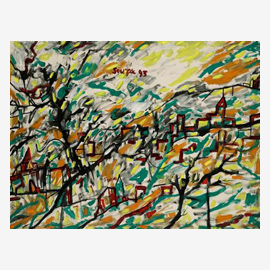Francis Newton Souza born in 1924 in Saligao, Goa, was largely responsible for shaping modern art in India. Born and brought-up in a strict Roman Catholic under Portuguese Colonial rule and later became the member of Communist Party. Being a rebellious from the beginning he challenges the notion of beauty which is reflected in his works also. Souza joined Sir J.J. School of Art in Bombay when he was 16 and was expelled from it because of poor grades and continuous participation in School strikes. In 1945 he returned to his home and painted a picture that was a completely different in stylization and theme which he had done earlier. The painting was called “the Blue Lady” which was bought by Dr. Herman Goetz for Baroda Museum. He was also the founding member of Progressive Ar...
Francis Newton Souza born in 1924 in Saligao, Goa, was largely responsible for shaping modern art in India. Born and brought-up in a strict Roman Catholic under Portuguese Colonial rule and later became the member of Communist Party. Being a rebellious from the beginning he challenges the notion of beauty which is reflected in his works also. Souza joined Sir J.J. School of Art in Bombay when he was 16 and was expelled from it because of poor grades and continuous participation in School strikes. In 1945 he returned to his home and painted a picture that was a completely different in stylization and theme which he had done earlier. The painting was called “the Blue Lady” which was bought by Dr. Herman Goetz for Baroda Museum. He was also the founding member of Progressive Artist Group which he later left to pursue an art career in Europe.
Closest to the European Modernism, Souza is known for inventive human forms. Souza’s work are mostly not pleasing to the eye, challenging the beauty and aesthetics. Souza’s work comprised of still life, landscapes, nudes, icons of Christianity, etc. one of the most common theme is that of a conflicting relationship between a man and woman. Souza’s rebellious and non-conformist nature can be seen in his style of Painting. The figures in his paintings were deliberately distorted to give it a unrestrained and realistic style. Souza’s work was mostly inspired by the folk art of Goa, the Renaissance paintings, landscapes of the 18th and 19th century Europe.
